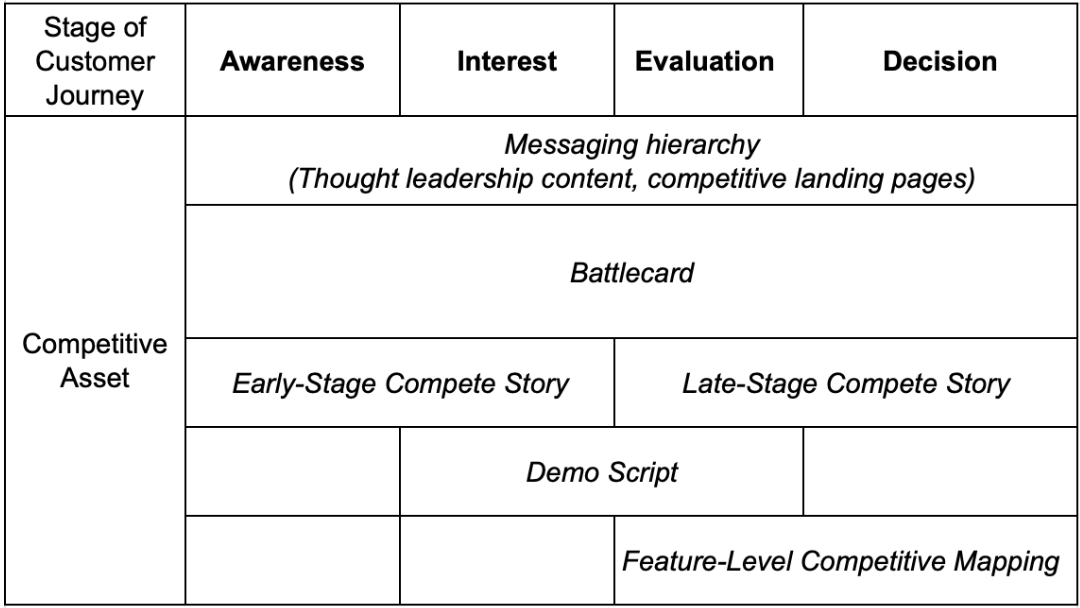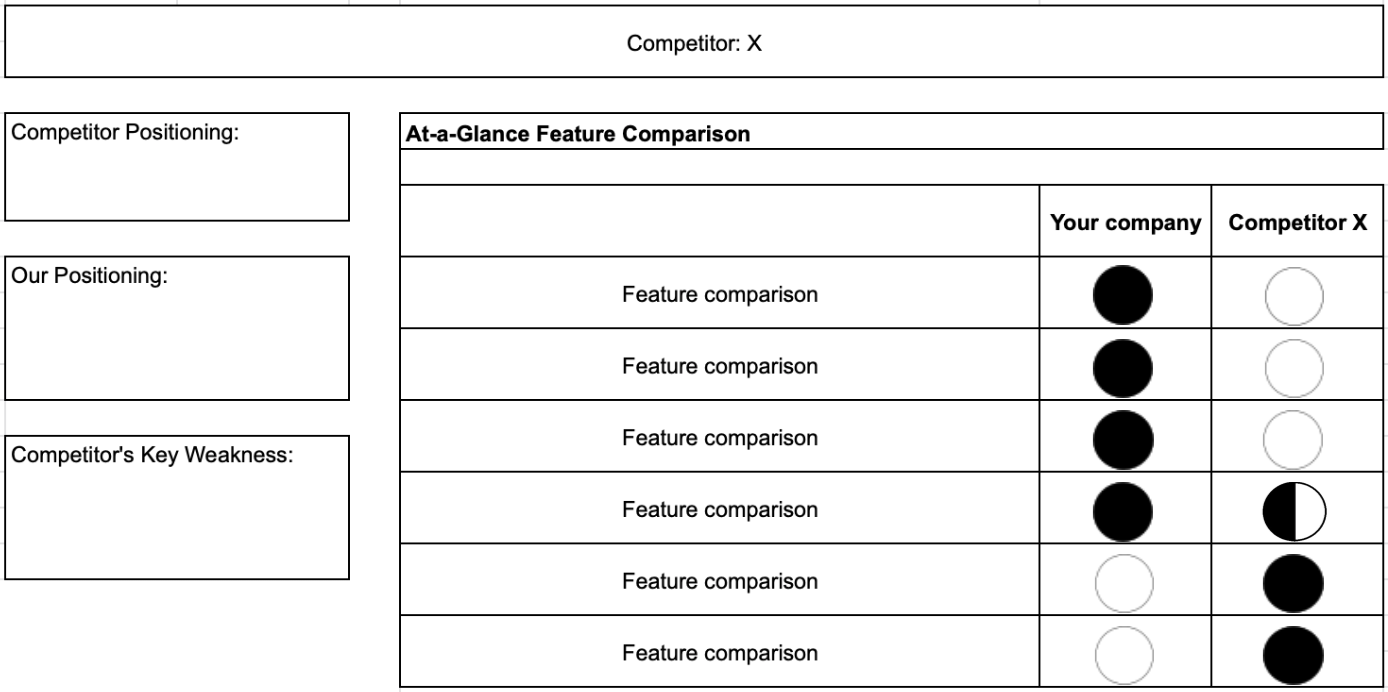In the early stages of category-defining startups, the competitive landscape can be slim and—dare I say—irrelevant. The founding team’s focus is on creating an entirely new product or service (and selling their audience on it) instead of differentiating from existing ones. But as companies grow and mature, fierce competition tends to follow. And whether your company is disrupting an existing category or creating a new one, the need to assemble a formal competitive strategy will arise much quicker than expected.
So… what exactly is a competitive strategy? Essentially, it is the battle plan for how you’ll take on the competition. The output of your competitive strategy will ultimately be a suite of assets, such as a competitor list, your competitive advantages over them, and combative sales collateral (e.g. relevant case studies, battlecards, demo scripts). The goal of these assets is to aid in overall competitive messaging and specifically in head-to-head sales scenarios.
Here are the top five mistakes to avoid when planning your competitive strategy (and what to do instead):
- Defining the competition too narrowly. It is easy to think your competition is only composed of products or services that are just like yours, while downplaying the competition from products or services in a different category where there is a perceived small amount of overlap. For example, a company in the cost optimization space might claim they have no competition, as nobody uses a specific technology (like AI) to optimize costs. But in reality, there are lots of competitors approaching cost optimization in different ways. To the customer, the method of obtaining the benefits of cost optimization is less relevant. They care about the outcome.
What to do instead: Consider the competition both inside and outside of your category (direct and indirect competitors). When thinking about the scope of your competition, remember that you don’t define your competition, your customers do. Analyze all the different options your customers have when shopping around for an alternative to your offering.
- Defining success as a list of product differences will result in highlighting features vs. end-to-end differentiators. Yes, the prospect wants to know the top three reasons you are the best, but more importantly, they should understand why choosing others will lead them astray.
What to do instead: Prepare a “playbook” that begins with a coherent, unified messaging strategy – and clearly explains how to execute it throughout every stage of the customer journey: awareness, interest, evaluation, and decision. This will include trap-laying questions (that will position your competition unfavorably), illustrative analogies (that encourage the prospect to visualize your product or service as superior), Customer Success stories, suggestions on how to present a demo, objection handling, and more. Below is a table that is part of a competitive playbook we recently prepared for a client, which shows how competitive assets should be used to influence perception and action throughout the customer journey:
And in case you were wondering what a battlecard is – below is a template:

- Approaching your competitive strategy as an exclusive Marketing / Product / Sales initiative will result in a weak and fragmented messaging system. Different teams should be aligned on a core messaging strategy, communicating a unified competitive narrative throughout the entire customer journey — from start to finish.
What to do instead: Diversify the scope of your competitive messaging by selecting a cross-functional team with representatives from Marketing, Sales, Product, and Customer Success departments. Mix people from different locations, products, and customer segments if relevant.
- Relying exclusively on internal experts will give you a one-sided understanding of the competition and can hide relevant information that should help define your overall compete strategy.
What to do instead: Interview clients, Closed-Won and Closed-Lost prospects (if possible). Use Sales recording tools like Gong to listen to calls discussing competitors. But also, don’t underestimate the importance of talking to folks on your front lines — like Sales and Customer Success.
- Not validating your competitive strategy prior to fully adopting it. Guiding your team based on a hypothesis vs. a tested experiment can result in frustration, distrust and ultimately — abandonment of the strategy.
What to do instead: Before expecting your Sales team to follow a competitive playbook, it is necessary to run some tests first. Convince your Sales team the strategy works by putting together teams (made up of subject matter experts from within the organization) to assist along the sales cycle of a real deal. Assistance can take the form of overall strategy guidance, battlecard overview, selecting or creating collateral for presentations, talking points, etc. Track the win rate of those deals compared to compete deals that run solo (unassisted) – to validate and refine the playbook based on real, hard data that does all the convincing for you.
The bottom line
The competitive landscape continuously evolves over the lifeline of a company. Deciding to create a comprehensive competitive strategy is an investment of many resources, but when done right, it can have a deep effect on your offering and will directly impact your win rate.








